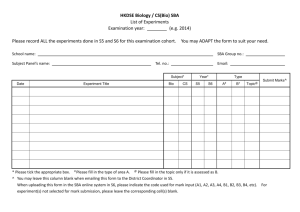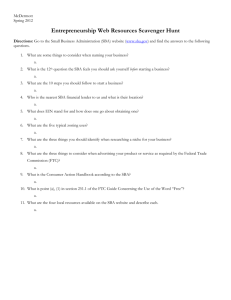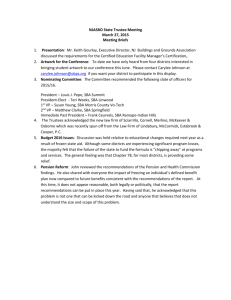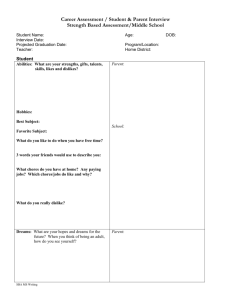Lessons From Experience: High Customer Concentration Proves Fatal
advertisement
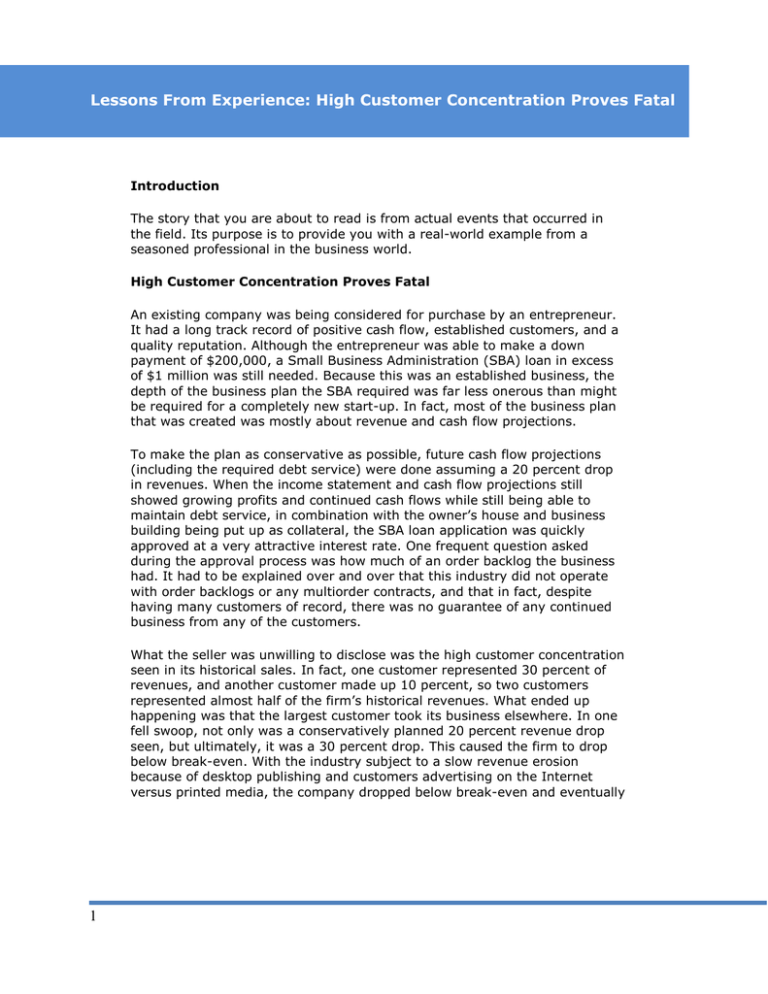
Lessons From Experience: High Customer Concentration Proves Fatal Introduction The story that you are about to read is from actual events that occurred in the field. Its purpose is to provide you with a real-world example from a seasoned professional in the business world. High Customer Concentration Proves Fatal An existing company was being considered for purchase by an entrepreneur. It had a long track record of positive cash flow, established customers, and a quality reputation. Although the entrepreneur was able to make a down payment of $200,000, a Small Business Administration (SBA) loan in excess of $1 million was still needed. Because this was an established business, the depth of the business plan the SBA required was far less onerous than might be required for a completely new start-up. In fact, most of the business plan that was created was mostly about revenue and cash flow projections. To make the plan as conservative as possible, future cash flow projections (including the required debt service) were done assuming a 20 percent drop in revenues. When the income statement and cash flow projections still showed growing profits and continued cash flows while still being able to maintain debt service, in combination with the owner’s house and business building being put up as collateral, the SBA loan application was quickly approved at a very attractive interest rate. One frequent question asked during the approval process was how much of an order backlog the business had. It had to be explained over and over that this industry did not operate with order backlogs or any multiorder contracts, and that in fact, despite having many customers of record, there was no guarantee of any continued business from any of the customers. What the seller was unwilling to disclose was the high customer concentration seen in its historical sales. In fact, one customer represented 30 percent of revenues, and another customer made up 10 percent, so two customers represented almost half of the firm’s historical revenues. What ended up happening was that the largest customer took its business elsewhere. In one fell swoop, not only was a conservatively planned 20 percent revenue drop seen, but ultimately, it was a 30 percent drop. This caused the firm to drop below break-even. With the industry subject to a slow revenue erosion because of desktop publishing and customers advertising on the Internet versus printed media, the company dropped below break-even and eventually 1 Lessons From Experience: High Customer Concentration Proves Fatal failed. It is important to take the following away from this scenario: • • 2 Although a high customer concentration may seem attractive on the surface, in the case of small businesses and this industry in particular, it proved fatal. Careful consideration has to be taken into account when projecting new business growth in an environment of technological change, which could make an entire industry almost obsolete.

